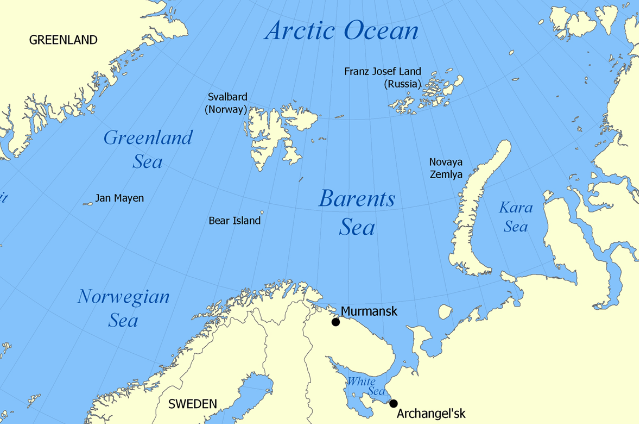"Global warming isn't a prediction. It is happening." - James Hansen
The aforementioned quote again comes into focus when a study stated that the parts of the Arctic region near Norway are warming at as much as seven times the rate of warming in the rest of the world.
- The region around the Northern Barents Sea has been warming two to two-and-a-half times the average warming of the Arctic region and five to seven times the warming in the rest of the world.
- Such intense warming has never been observed in the Arctic region before. This is leading to the phenomenon of Atlantification.
The Barents Sea borders the Norwegian and the Greenland Sea in the west, the Arctic Sea in the north, and the Kara Sea in the east. It is divided between Russia and Norway as defined by the United Nations Convention on the Law of the Sea ( UNCLOS ).
What is Atlantification?
Scientists have discovered 'hotspots' where some parts of the Barent Sea have started to closely resemble the Atlantic. This phenomenon has been termed Atlantification. The north-flowing ocean currents transport the warm waters of the Atlantic into the Arctic Ocean through the Barents Sea. Unlike the Atlantic or the Pacific, the upper waters of the Eurasian Arctic Ocean get warmer as they get deeper. The top of the ocean is typically covered by sea ice. Below this is a layer of cool freshwater, followed by a deeper layer of warmer, saltier water delivered to the Arctic from the Atlantic by ocean currents. According to the records from NASA, the total area covered by sea ice in this region has fallen by almost half since satellite records that began in the early 1980s. One possible reason for this is that, when sea ice melts through the summer, it replenishes the freshwater layer that sits above the warmer Atlantic layer. With less sea ice around, the amount of fresh water dwindles which in turn causes the ocean to mix together, drawing more Atlantic heat up towards the surface. Thus, Atlantification will cause more ice to melt from below. The human activities bringing a change in climate change would further accelerate the process of Atlantification.
Consequences of the Warming Pattern:
- The exceptional warming of the Arctic would lead to extreme weather conditions in North America, Europe, and Asia. As it is, the Arctic is the fastest-warming region in the world of the closed-loop of melting sea ice.
- The melting of the ice causes the surface ocean water to attract and absorb more energy thereby contributing to the process of warming.
- The rapid warming in the Arctic region has already thrown up weird weather conditions such as the first recorded rainfall at the Summit Station of Greenland back in the months of July-August, 2021.
- Lighting strikes which were once rare in the region have increased by eight times in the last decade. Earlier, they did not happen as lighting strikes or storms require rapid warming which was not available earlier than today.
- The Arctic region fish species have seen a decrease again due to the changing process.
- The warming of the Barents Sea also led to an extreme snowfall event, often dubbed the 'Beast from the East', across most of Europe.
- Jet stream conditions have become common in the region as the cold air of the Arctic region is regularly interacting frequently with the warm air at lower latitudes, again leading to extreme weather events.
- India is also a victim of the process as the sweltering heat weaves in India during the summer months are much a result of the action. Dust storms are further attributed to the same geographical dynamics.
Way Forward:
The ice in the Arctic region acts as a barometer for the health of the global environment. Hence, various climate meetings or councils should seriously focus on dealing with the challenges in the region too.
. . .
References:

